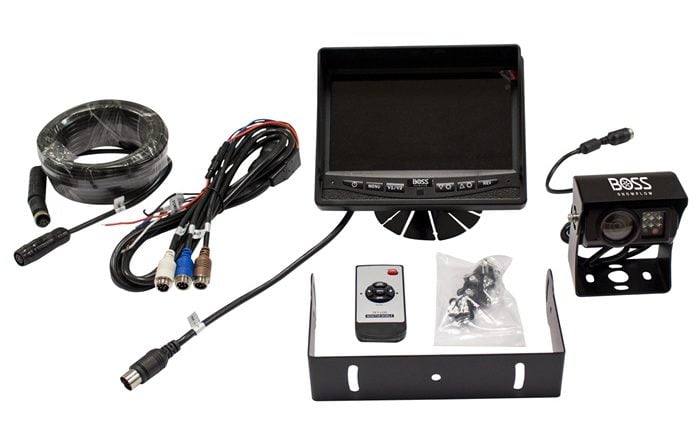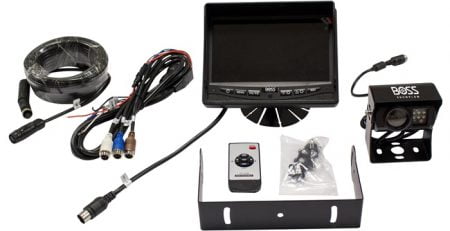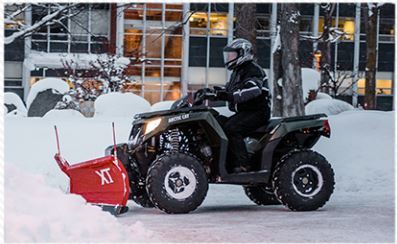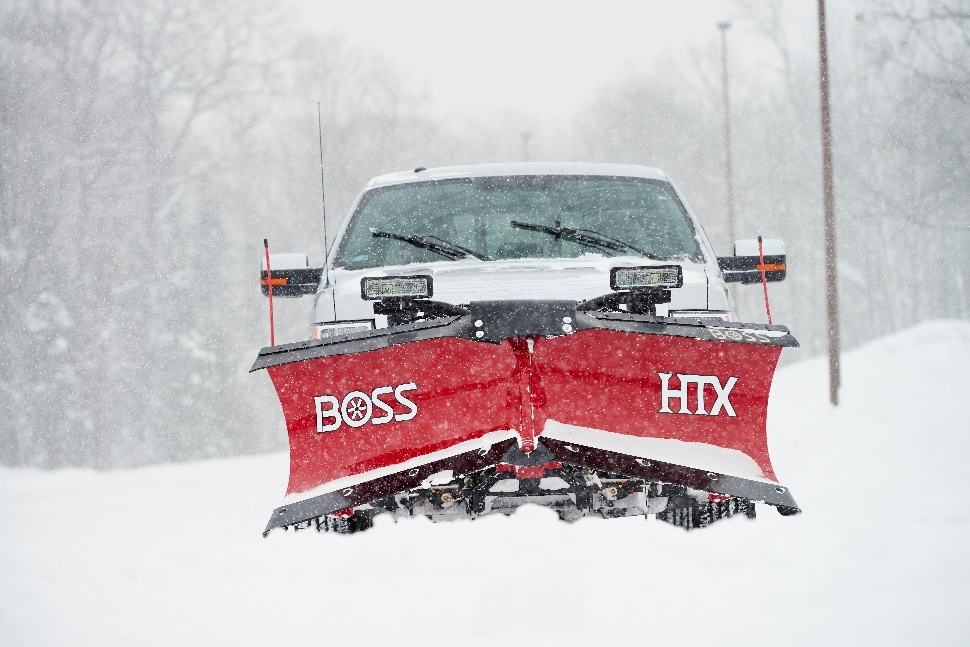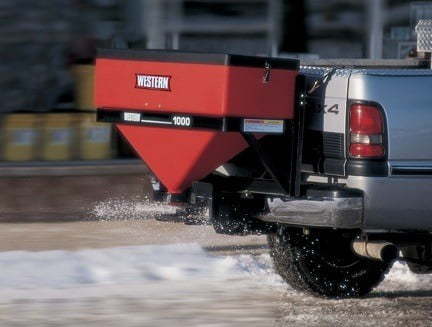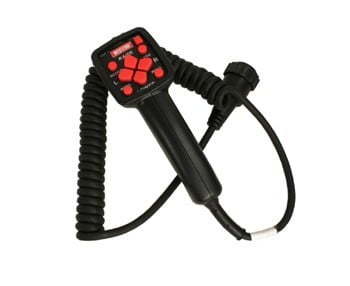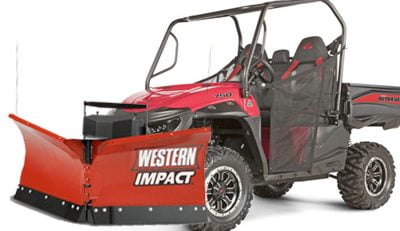New Rear Visibility Requirements for your Plow Truck
SnowplowsPlus would like to notify you that there are new rear visibility requirements which will go into effect for altered vehicles on May 1, 2018 in the United States and 2019 in Canada. All OEM Trucks with a gross vehicle weight rating (GVWR) of 10,000 pounds or less will be required to have rear-view cameras as standard equipment. These new requirements are part of FMVSS 111: rear visibility standard, which has been the standard for mirrors and now includes the requirements for rear-view camera systems. The new rear visibility requirements will also include buses, school buses, and multi-purpose passenger vehicles.
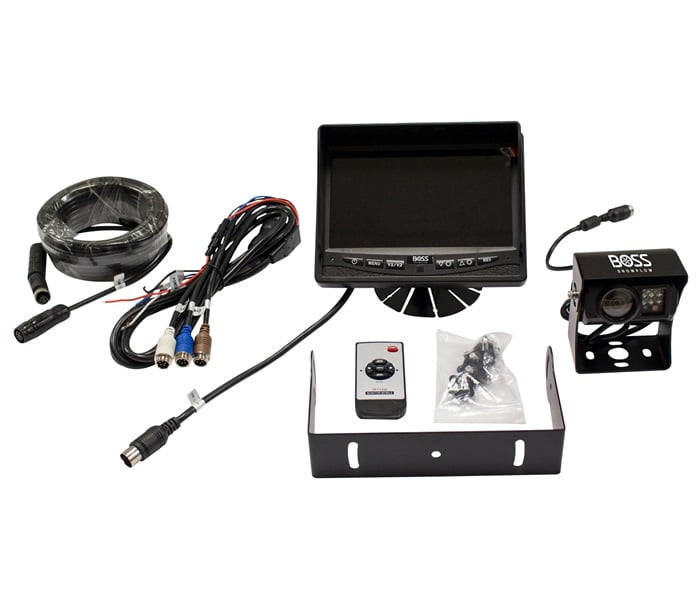
What does this mean for you as a snow and ice management business? You’ll need to comply with the latest FMVSS111 standard when plowing snow or spreading salt with your equipment which may remove or block the OEMs rear-view camera system in anyway. Any 2018 model year and later vehicle that is meeting FMVSS111 rear visibility requirements before alteration must meet rear visibility requirements after alteration beginning May 2018.
Yes, there are new rear vision system requirements that go into effect for altered vehicles on May 1, 2017. Note, the context is important as the perspective of what is considered “required” can be considered differently, depending on the use of this technology. These systems are gaining popularity for many end-user applications, and the technology can provide drivers and/or operational management with audio/visual data of what takes place in and around the vehicle.
For example, insurance companies can make rear camera systems a requirement for businesses that provide passenger transportation or parcel delivery services in order to lower premiums due to improved ability to enhance various operational safety aspects. Chassis OEMs are offering these systems to aid in hitching trailers, as well as greater safety through more visual information for the driver. Mixed in with consumer and commercial demand for rear vision systems are the upcoming National Highway Traffic Safety Administration (NHTSA) requirements for manufacturers to certify certain vehicles are equipped and meet performance mandates related to the field of view directly behind them.
These new requirements are part of FMVSS 111: Rear Visibility, which has traditionally been the standard for mirrors and now includes rear camera systems. It will apply to vehicles with a gross vehicle weight rating (GVWR) of 10,000 pounds or less, including trucks, buses, school buses and multipurpose passenger vehicles. The change to include rear vision systems in the Standard comes from the Cameron Gulbransen Kids Transportation Safety Act of 2007, in which NHTSA was directed to undertake a rulemaking process to expand the required driver field of view in order to reduce backover accidents. This extended area is a 10-foot by 20-foot space directly behind a vehicle which traditional mirrors do not enable a driver to fully view. The test used to verify these requirements includes a series of seven specifically sized cylindrical objects with either a horizontal band or vertical stripe applied. They are located in designated positions along the perimeter of this area.
There are a series of performance requirements for the rear vision systems in this new portion of FMVSS 111. Full compliance is required for vehicles with a GVWR of 10,000 pounds or less, manufactured on or after May 1, 2018. However, the phase-in for the Standard calls for the field of view criteria to be met (where it applies to altered vehicles) beginning May 1, 2017. This means a vehicle that is completed on or after this date and equipped with a rear vision system already meeting field of view requirements must continue to do so after it is altered. For example, when performing a pickup box removal on a truck meeting the field of view requirements with the OEM camera system, the camera will need to be reinstalled (or an equivalent, compatible camera installed) on the new body and in a position which continues to satisfy the field of view requirements.
While there is no comprehensive list indicating which vehicles are equipped with rear vision systems and compliant with the field of view criteria, NHTSA’s New Car Assessment Program (NCAP) now includes rear vision systems in a list of recommended safety technologies (visit nhtsa.gov/equipment/safety-technologies#5571).
Not all vehicles are evaluated under the program, but those recognized by NHTSA as having a “recommended advanced technology” for a rear vision system will have been reviewed for conformity for the field of view, image size and response time criteria from FMVSS 111 by NHTSA. However, a conservative assumption is vehicles on which you are removing and reinstalling (or replacing) a rearview camera on or after May 1, 2017, will need to be evaluated for field of view.
On May 1, 2018, the other FMVSS 111 rearview system performance requirements, in addition to field of view, take effect. Most of these involve system hardware and electronics characteristics, such as response time, linger time, deactivation, default view and durability. Another requirement is image size, which can be affected by the camera and its location when replacing or relocating an OEM-supplied unit. Reviewing chassis manufacturers’ incomplete vehicle documents will be an important first step in preparation for completing vehicles from chassis cabs, cutaways, etc. This will enable you to see what is involved with compliance to FMVSS 111 for the particular vehicle.
Although the rule is currently in the proposed status, Canada is planning to adopt these same requirements within Canada Motor Vehicle Safety Standard 111. However, the proposed regulation does not include a phase-in period and would instead require full compliance as of May 1, 2018.

